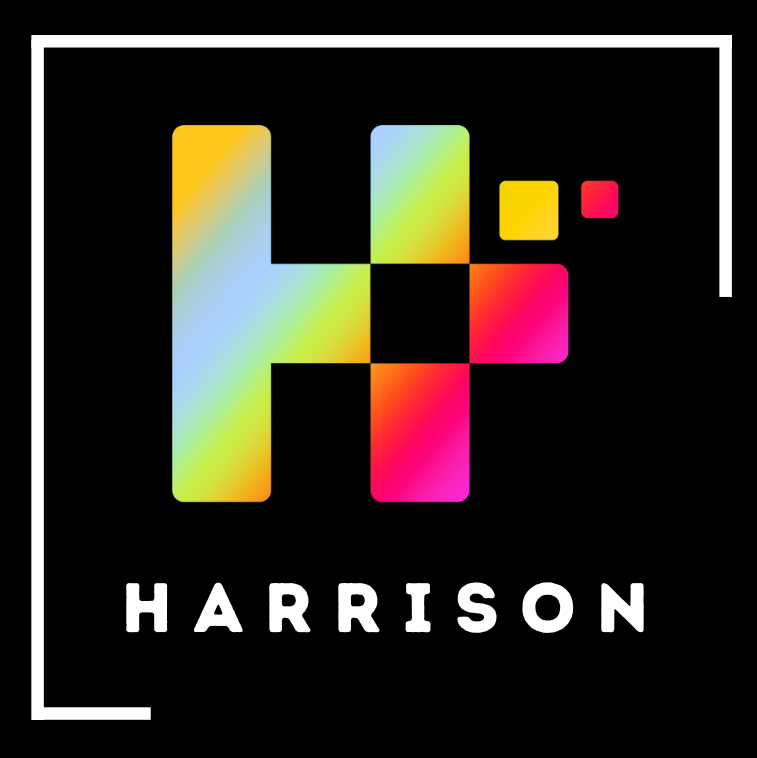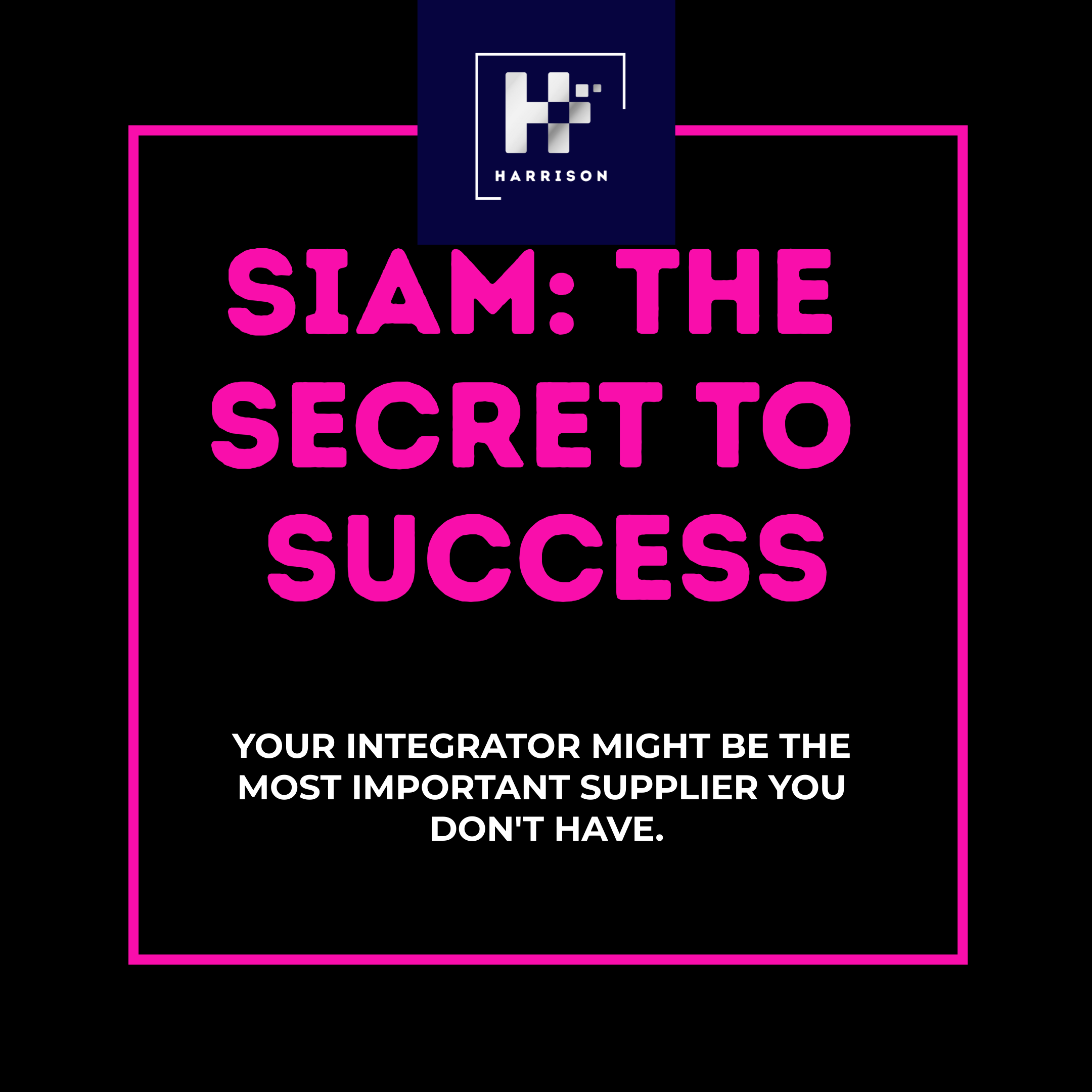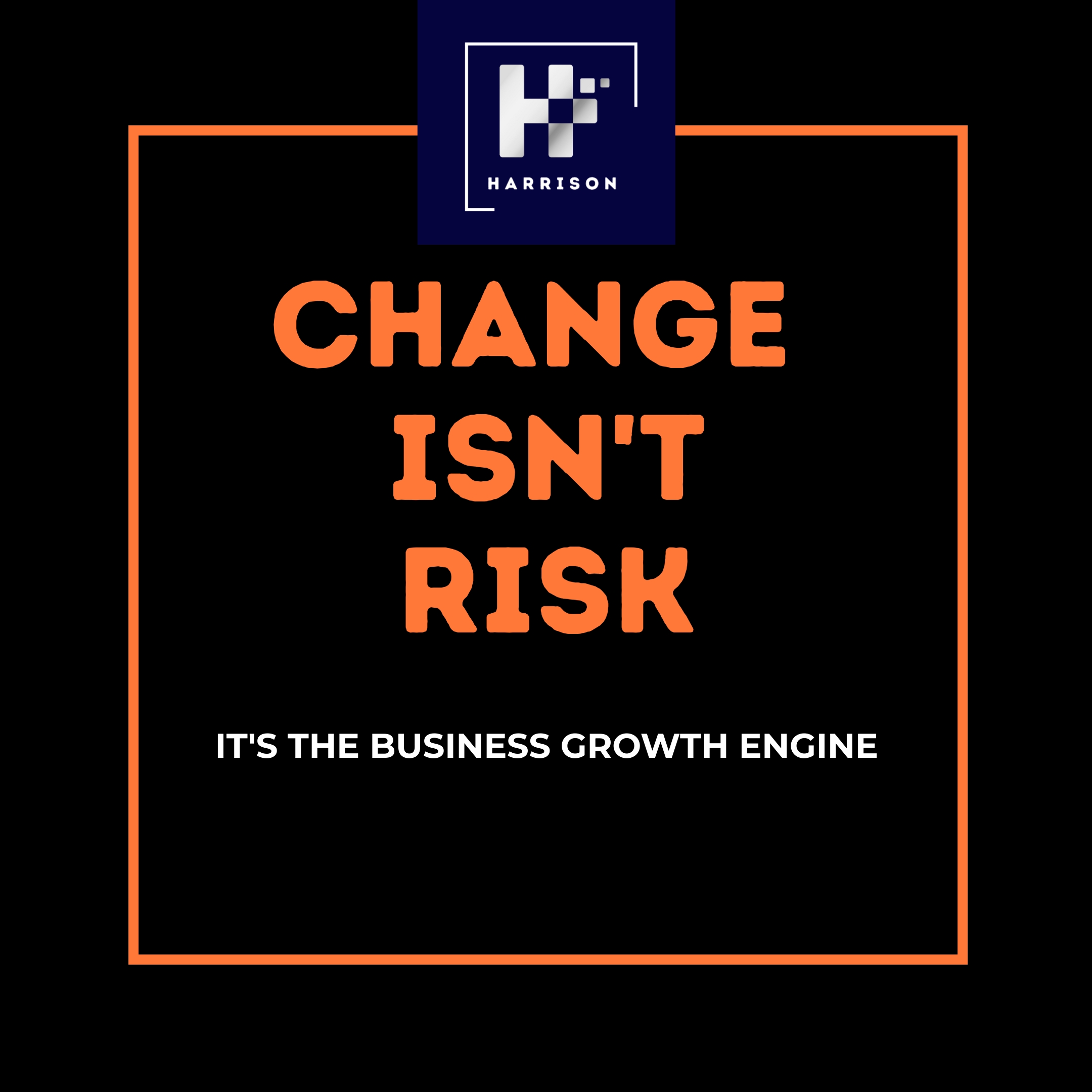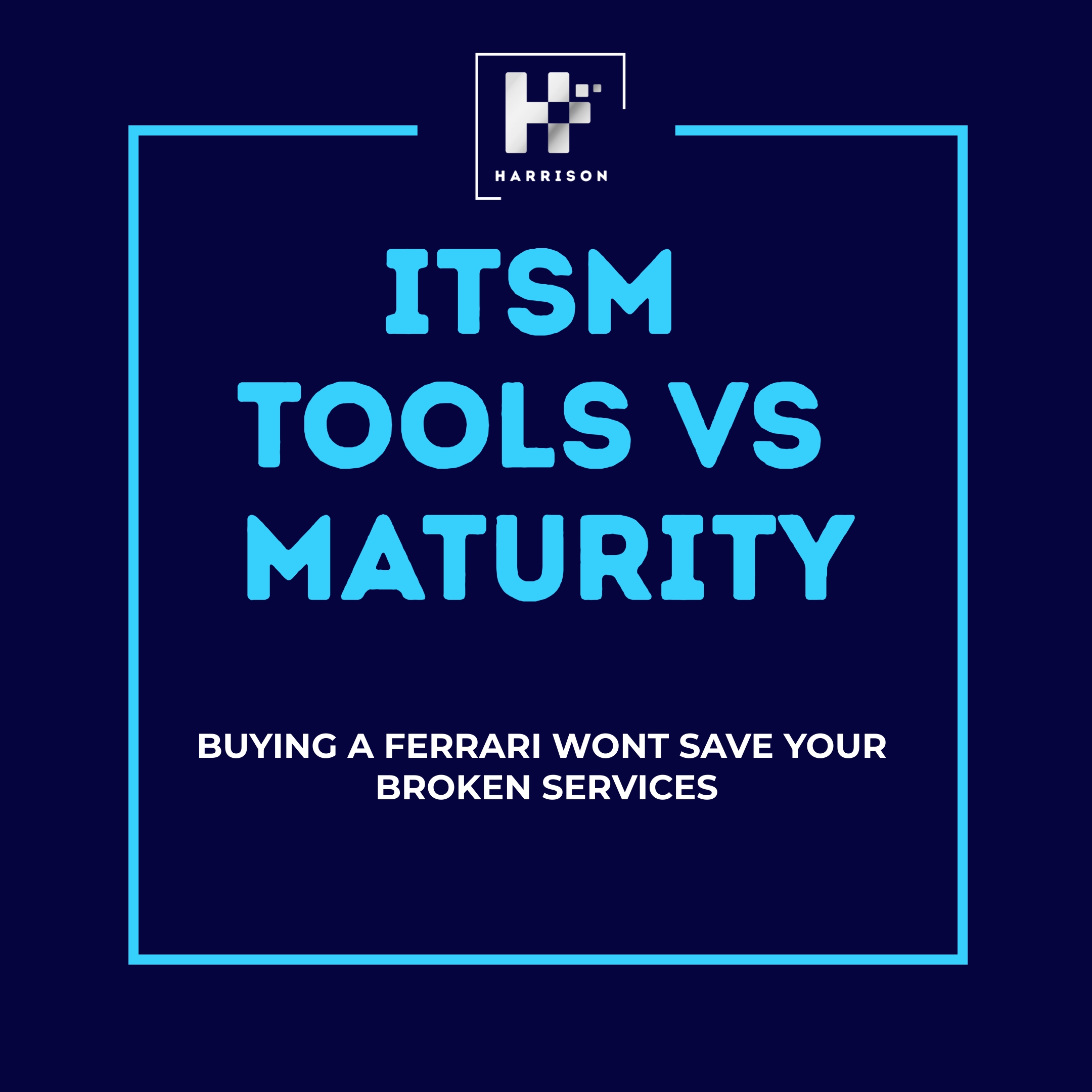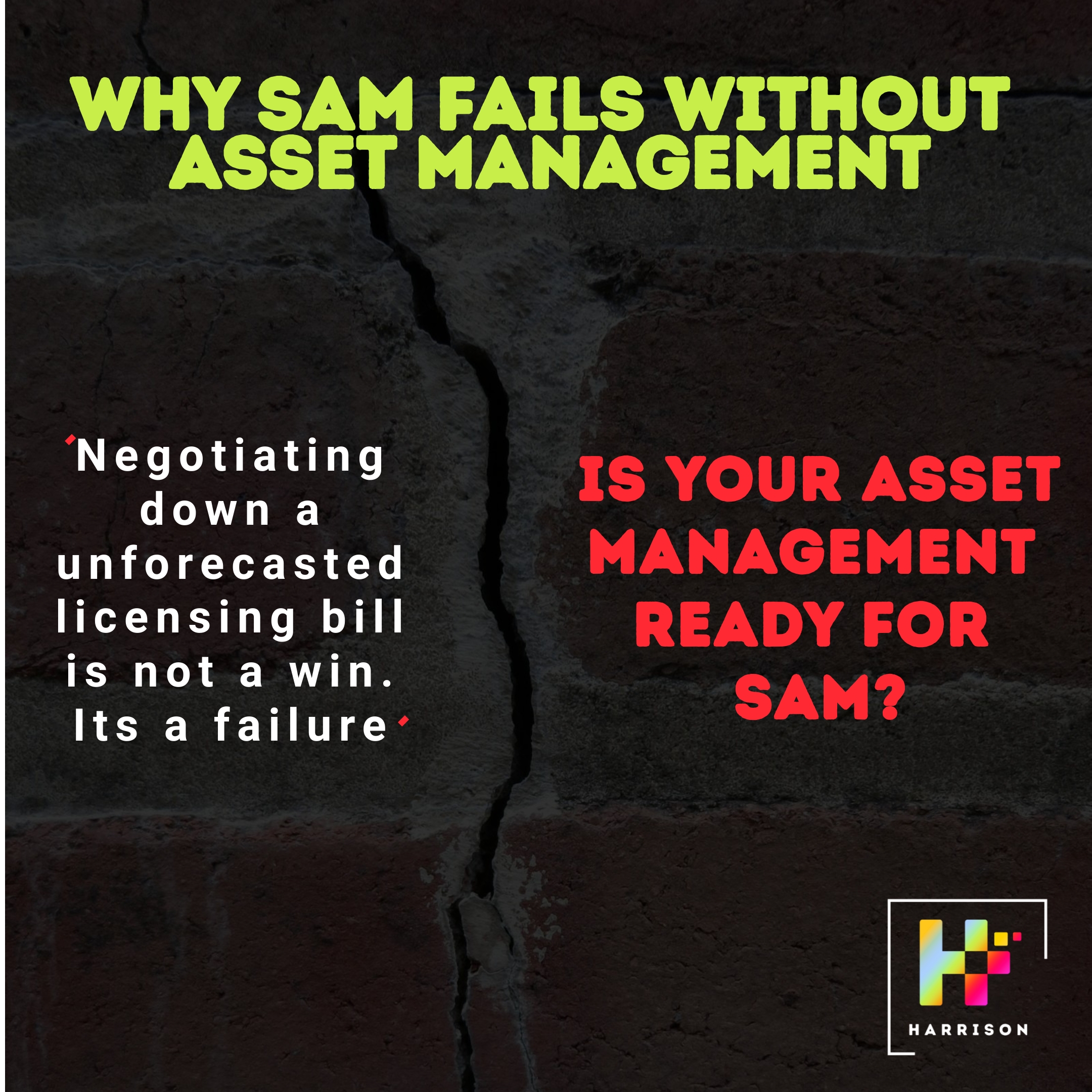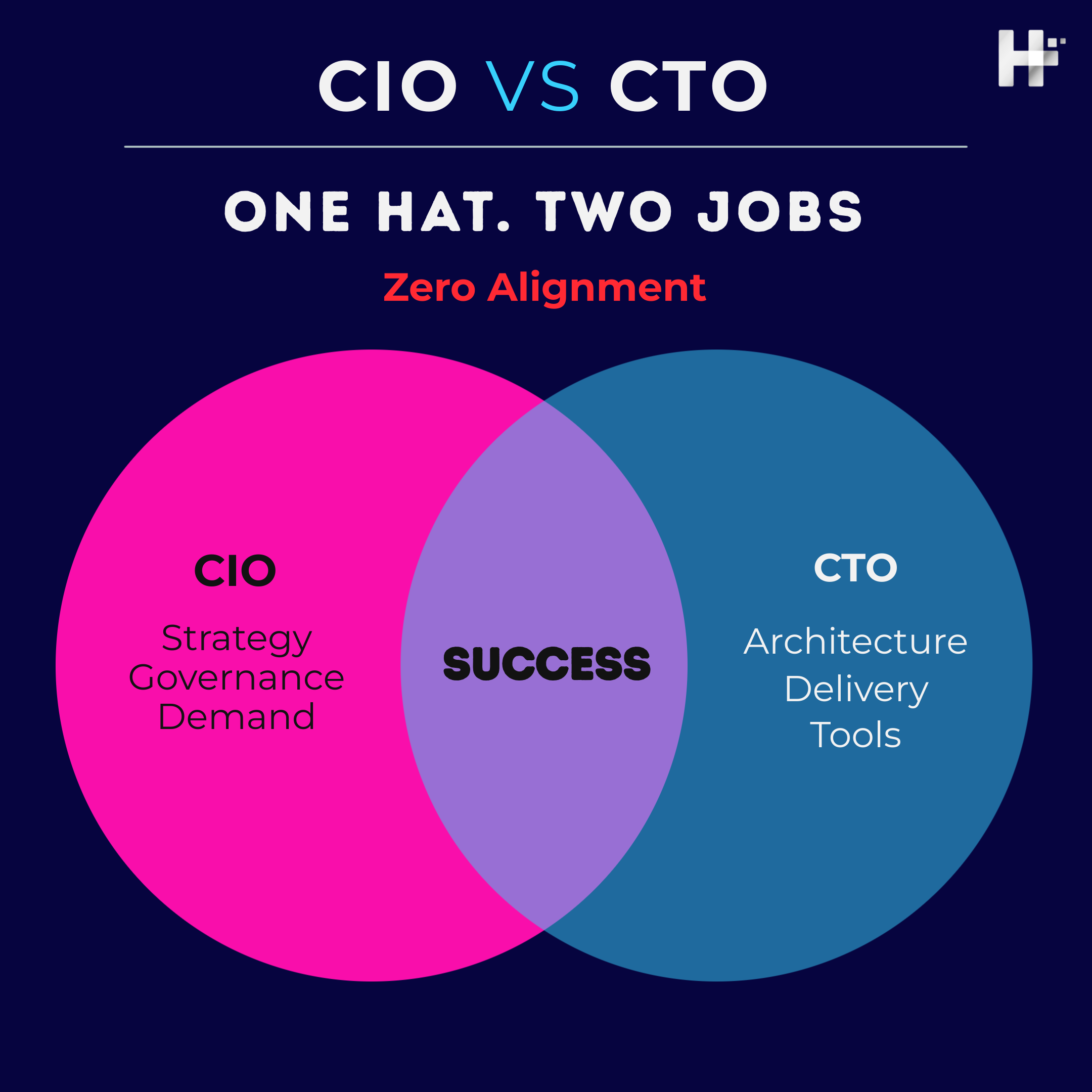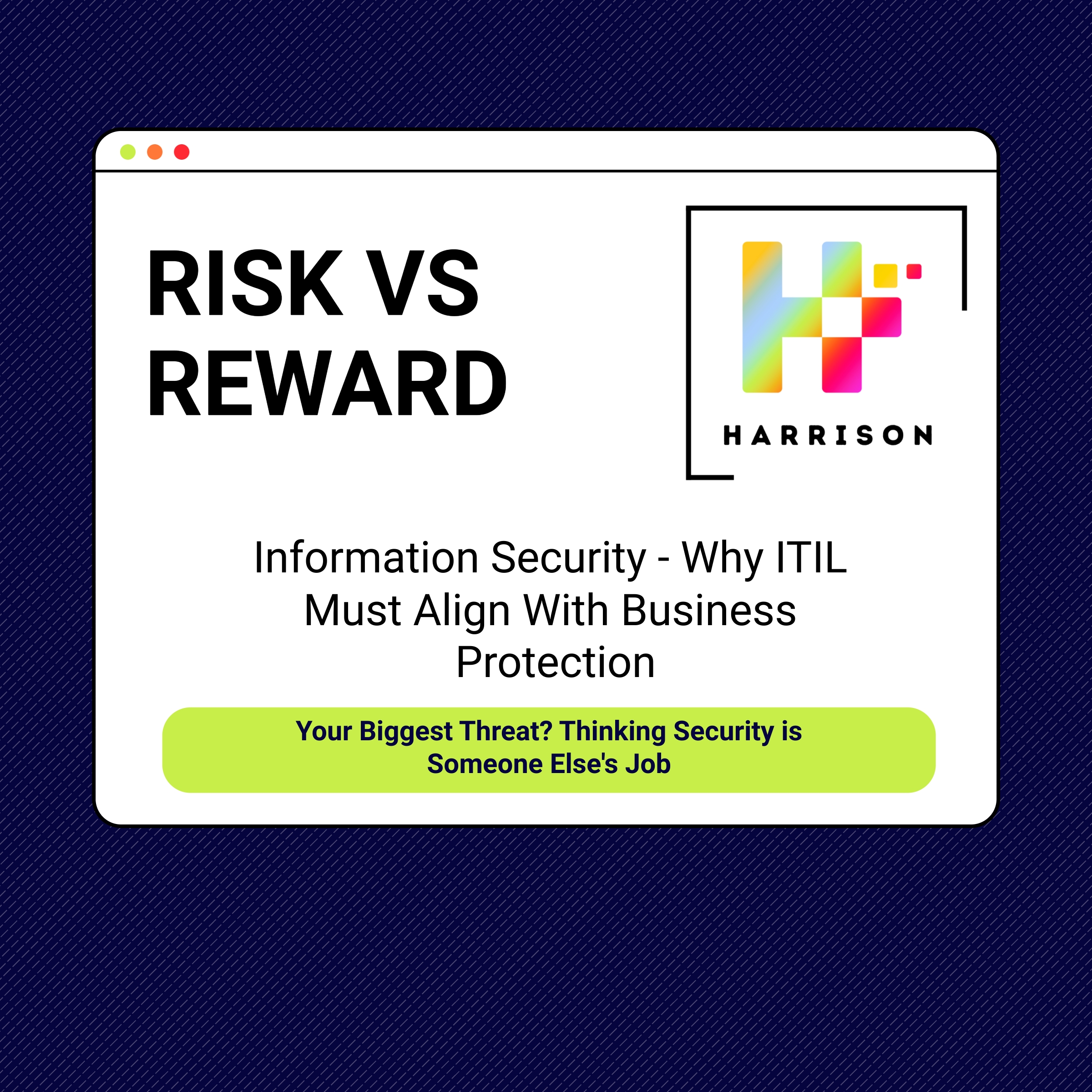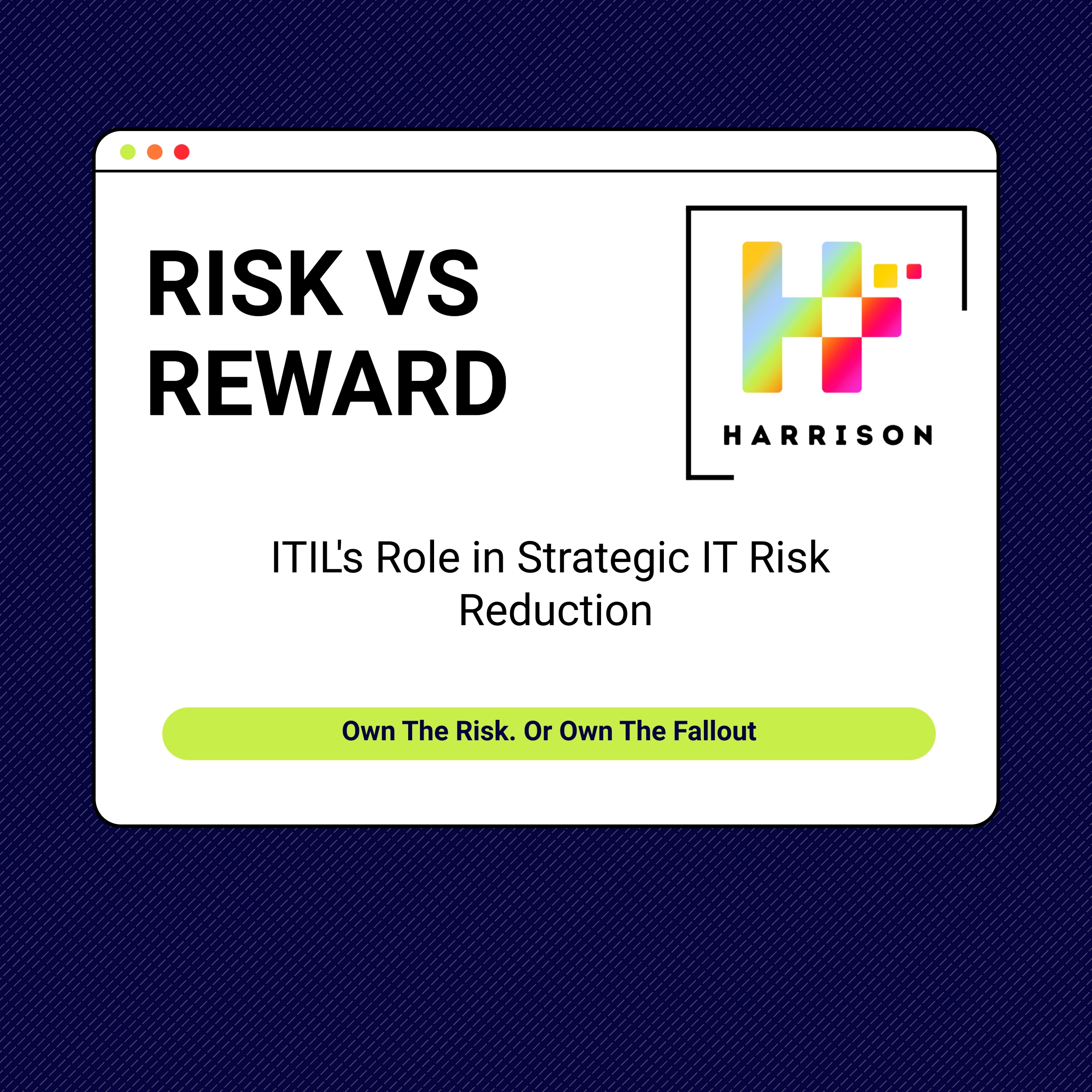SIAM Strategy: 10 ways to transform your workforce into a SIAM powerhouse
People are THE critical element of a successful SIAM strategy.
The importance of sourcing the right people, getting the right organisational design in place and ensuring there is an effective development / coaching agenda is overlooked all too often by organisations as part of a Service Integration and Management (SIAM) strategy.
Here are 10 ways to transform your workforce into a SIAM powerhouse.
1. Ensure you have mapped your ITOM capabilities before you design your organisation.
Prioritise mapping out your ITOM capabilities comprehensively before delving into organisational design. Why is mapping so crucial? It outlines the tools, processes and skills needed to empower your team. Diving into organisational design without a clear picture of your ITOM capabilities can lead to misalignment, redundancy, and ultimately, operational inefficiencies.
By prioritising a thorough ITOM capability mapping exercise, you unlock a plethora of benefits:
- Greater Accuracy: You gain a clear understanding of your current strengths and weaknesses, enabling you to design an organisation that leverages your existing assets and addresses identified gaps.
- Strategic Alignment: The map ensures your organisational structure directly supports your ITOM objectives, fostering seamless integration and optimal performance.
- Resource Optimisation: You can avoid duplicating efforts and allocate resources strategically, maximising returns on your investment within your SIAM strategy.
- Improved Decision-Making: Data-driven insights from the map empower you to make informed decisions about staffing, technology adoption, and training initiatives.
- Future-Proofing: The map serves as a living document, evolving alongside your changing ITOM landscape and ensuring your organisation remains adaptable and future-ready, contributing to a robust and enduring SIAM strategy.
Begin your mapping journey by identifying key ITOM domains such as monitoring, automation, service management, and security. Within each domain, delve deeper into the specific tools, processes, and skills employed. Leverage data sources like documentation, configuration management databases, and team expertise to paint a complete picture.
We recommend regularly revisiting and updating your map to reflect technological advancements, evolving business needs, and your team’s growing expertise.
2. Develop role designs before you recruit.
You should meticulously craft comprehensive role designs to attract, select, and retain top talent. Go beyond simple job descriptions and encompass crucial elements such as:
- Crystal-clear specifications: Outline the precise skills, experience, and qualifications required for success in the role. This ensures alignment with organisational goals and avoids attracting ill-fitting candidates.
- Ambitious yet achievable objectives: Define clear performance expectations, metrics, and key deliverables for the role. This provides future team members with a target and fosters accountability.
- Strategic development plans: Chart a course for individual growth and development within the role. This demonstrates your commitment to investing in your team’s potential and boosts employee satisfaction.
- Collaborative team objectives: Integrate the role into the broader team dynamics, highlighting expected contributions and how the individual will collaborate with colleagues. This fosters teamwork and a sense of shared purpose.
- Tailored interview packs: Develop interview questions and assessments that directly test the necessary skills and competencies outlined in the role design. This ensures an objective and effective selection process.
Remember, your role design is not a static document. Regularly review and refine it based on industry trends, evolving business needs, and feedback from existing team members. This ensures your talent acquisition strategy remains dynamic.
Investing in meticulous role design delivers a multitude of benefits:
- Efficient talent selection: Attract the right candidates with targeted messaging and qualifications, saving time and resources on sifting through irrelevant applications.
- Improved performance: Set clear expectations and development pathways, empowering individuals to excel and contribute optimally to team goals.
- Enhanced retention: Demonstrate your commitment to individual growth and career development, fostering employee satisfaction and reducing turnover.
- Stronger team dynamics: Integrate new members seamlessly by outlining their role within the wider team, promoting collaboration and fostering a sense of belonging.
3. Make coaching part of your SIAM strategy: Invest in people power.
Coaching your team accelerates maturity, increases staff satisfaction and increases performance and retention. Here’s how coaching fuels your SIAM strategy:
- Accelerated Maturity: Skilled coaches guide individuals through knowledge gaps, refine soft skills, and cultivate problem-solving abilities. This translates to a faster-evolving team, adept at tackling SIAM challenges and proactively implementing best practices.
- Boosted Staff Satisfaction: Feeling valued and supported is crucial for employee engagement. Coaching demonstrates your commitment to individual growth, fostering a sense of purpose and belonging. This leads to happier, more motivated team members who go the extra mile.
- Enhanced Performance: Coaching unlocks hidden potential by addressing individual weaknesses and honing strengths. Tailored guidance empowers team members to tackle complex tasks effectively, consistently exceeding expectations.
- Reduced Turnover: Investing in your people through coaching sends a clear message about their value. They feel appreciated and equipped to succeed, minimising the risk of them seeking opportunities elsewhere.
- Improved Collaboration: Coaches can facilitate team-building exercises and communication workshops, fostering a culture of trust and collaboration. This translates to smoother information flow, more effective problem-solving, and ultimately, superior SIAM outcomes.
Implementing a strategic coaching program requires careful planning. Consider these key steps:
- Identify development needs: Conduct talent assessments to understand individual strengths and areas for improvement.
- Select the right coaches: Seek qualified professionals with relevant SIAM experience and strong coaching skills.
- Tailor the coaching approach: Match coaches with individuals based on personality, learning styles, and development needs.
- Set clear goals and expectations: Establish measurable objectives for both coaches and participants aligned with your overall SIAM strategy.
- Monitor and track progress: Regularly assess the impact of coaching through feedback mechanisms and performance metrics.
4. Ensure your SIAM leadership team understands and believes in the SIAM strategy.
Establishing a robust and cohesive coalition within your SIAM leadership team is paramount to driving success in your SIAM implementation.
SIAM isn’t merely a process or a set of tools; it’s a cultural shift that demands buy-in at all levels, especially from your leadership team. Leadership set the tone, and when they’re firmly on board, your SIAM journey will be smoother, more efficient, and ultimately more successful. A divided or sceptical leadership team could derail your SIAM strategy altogether.
Here’s why fostering understanding and belief within your SIAM leadership team is crucial:
- Strategic Alignment: Leaders who grasp SIAM’s principles and objectives can align departmental goals with the overall SIAM vision. This ensures everyone is rowing in the same direction, propelling the initiative forward cohesively.
- Resource Allocation: When leaders truly believe in SIAM’s value, they’re more likely to allocate necessary resources, both financial and human, to support its implementation. This sends a powerful message of commitment and empowers the team to execute effectively.
- Change Management: Change can be challenging, but SIAM leaders who grasp its advantages can become powerful champions. Through transparent communication, active listening, and addressing concerns, they can facilitate a smooth transition and foster team trust, ensuring a successful adoption.
- Decision-Making: Complex scenarios and unforeseen challenges are inevitable. Leaders who deeply understand SIAM can make informed decisions that align with its principles and long-term objectives, ensuring the initiative stays on track.
- Motivation and Inspiration: True believers inspire others. When leaders exude confidence and enthusiasm for SIAM, it trickles down, motivating the team and fostering a culture of collaboration and dedication.
So, how do you cultivate understanding and belief among your SIAM leadership team? Consider these steps:
- Comprehensive Training: Targeted training programs can shed light on SIAM’s complexities, unravelling its concepts, benefits, and optimal implementation strategies. This empowers leaders with the knowledge and confidence they need to actively promote and champion the SIAM strategy.
- Open Communication: Foster a culture of open dialogue and encourage leaders to express concerns and ask questions. Actively listen and address their queries transparently, building trust and understanding regarding the SIAM strategy.
- Success Stories: Showcase real-world examples of how SIAM has benefited other organisations. This tangible evidence helps leaders visualise the potential impact and fuels their belief in the process.
- Collaboration: Involve leaders in the planning and execution phases of SIAM, empowering them to take ownership and feel invested in its success.
- Regular Recognition: Celebrate milestones and achievements along the way, highlighting the positive impact of SIAM and reinforcing its value proposition.
5. Shape your interviews to test for the right attitudes and personalities.
It’s not just about tools and processes; it’s about fostering a collaborative environment where individuals with positive attitudes and complementary personalities can build trust and work effectively together. This necessitates conducting interviews that go beyond technical expertise – you should actively seek out candidates who demonstrate crucial interpersonal qualities.
Instead of solely focusing on skill-based questions, consider incorporating scenarios that reveal a candidate’s:
- Teamwork: How do they handle collaboration, conflict resolution, and shared accountability?
- Communication: Can they articulate clearly, actively listen, and adapt their communication style to different audiences?
- Positive attitude: Do they exhibit a willingness to learn, resilience in the face of challenges, and a commitment to continuous improvement?
- Empathy: Can they understand and respect diverse perspectives, fostering a sense of inclusion and belonging?
6. Provide target incentives and rewards throughout the SIAM journey.
Fueling motivation and maintaining high morale are crucial elements of any successful SIAM implementation. While robust processes and clear goals are essential, strategically designed incentives and rewards can provide an extra layer of drive, propelling your team towards a successful SIAM transformation, while keeping morale and motivation high throughout the journey.
Instead of viewing incentives as merely a cost, consider them an investment in boosting engagement and performance. Make your incentive program impactful by:
- Target the right behaviours: Reward teamwork, collaboration, problem-solving, and exceeding established benchmarks. This reinforces the values and actions critical for SIAM success.
- Tailor rewards to preferences: Offer a variety of options ranging from recognition programs, professional development opportunities, or even performance-based bonuses. Cater to diverse preferences within your team and supplier community.
- Communicate clearly and consistently: Ensure everyone understands the criteria for earning rewards and how their contributions impact the SIAM journey. Transparency fosters trust and motivates participation.
- Celebrate achievements: Publicly acknowledge and reward successes, reinforcing positive behaviours and creating a culture of appreciation. This fuels excitement and inspires continued commitment.
7. The often forgotten about SIAM strategy: Don’t stop measuring and developing your SIAM team EVER!
Never underestimate the power of ongoing measurement and development in propelling your team to new heights.
Here’s why keeping a data-driven finger on the pulse is crucial:
- Clarity Through Metrics: Data reveals the story behind your performance. Track key metrics like service availability, incident resolution times, and cost savings to identify areas for improvement and celebrate achievements.
- Adaptation Through Measurement: The SIAM landscape is ever-evolving. By regularly measuring your team’s effectiveness against evolving industry standards and business goals, you can adapt your strategies and stay ahead of the curve.
- Celebrating Success: Recognising progress fuels motivation. Quantify and celebrate milestones, both big and small, to boost team morale and reinforce positive behaviours that contribute to SIAM success.
- Continuous Learning: Don’t let your team stagnate. Invest in training programs, knowledge-sharing initiatives, and industry conferences to equip your team with the latest advancements and best practices. This fosters a culture of continuous learning and empowers them to tackle future challenges with confidence.
8. Create a structured recruitment campaign and use your SIAM partner to support you on this.
While independent recruitment efforts can be fruitful, collaborating with your trusted SIAM partner opens a gateway to identifying ideal candidates. It isn’t just about filling vacancies, it’s about investing in your long-term success.
Here’s how this collaborative approach transforms your recruitment journey:
- Sharpened Focus: By clearly outlining your broader goals and talent needs, your SIAM partner gains a deep understanding of what you’re seeking. This eliminates ambiguity and enables them to target their extensive network and resources, pinpointing candidates who truly align with your vision.
- Leverage Expertise: Your SIAM partner doesn’t just possess a network; they possess deeper industry insights. They understand the nuances of SIAM roles, the specific skill sets required, and the unique challenges your team might face. This expertise translates into a candidate pool brimming with individuals equipped to hit the ground running.
- Streamlined Process: Your partner can help you craft a structured recruitment campaign, from crafting targeted job descriptions to designing effective interview processes. This streamlines the entire process, saving you time and resources while ensuring a consistent and professional experience for candidates.
- Better Hires: The combination of your needs, your partner’s expertise, and their vast network leads to a higher probability of identifying ideal candidates. These individuals not only possess the necessary skills and experience but also understand the complexities of SIAM and readily align with your company culture.
- Enhanced Success: This collaborative approach isn’t just about filling positions; it’s about building a successful team. Your partner can provide ongoing support throughout the onboarding process, ensuring a smooth transition and setting your new hires up for success within your SIAM environment.
9. Work with a training partner to ensure the right courses and materials are available to the right people.
Investing in the right training, delivered in partnership with experts, empowers your team to accelerate their knowledge and capabilities, propelling your SIAM journey forward. Training isn’t just a cost, it’s an investment in your team’s potential and your SIAM success.
Here’s why collaborating with a training partner is your secret weapon:
- Targeted Training: They don’t offer a one-size-fits-all approach. Instead, they work closely with you to understand your unique needs, identifying the specific skills and knowledge gaps within your team. This translates into tailored training programs and materials, ensuring individuals receive exactly what they need to excel in their roles.
- Expertise on Tap: Their team consists of seasoned SIAM professionals who possess in-depth knowledge of the latest best practices, industry trends, and specific challenges within the SIAM landscape. This expertise guarantees your training aligns with current standards and equips your team to tackle real-world scenarios effectively.
- Content Diversity: They offer a diverse range of training options, from instructor-led courses and workshops to e-learning modules and on-the-job coaching. This caters to various learning styles and preferences, maximising engagement and knowledge retention within your team.
- Reduced Burden: Partnering with training experts frees up your internal resources. They handle program development, logistics, and delivery, allowing your team to focus on their core functions while still experiencing the benefits of continuous learning.
- Increased Staff Satisfaction: Investing in your team’s development sends a powerful message of appreciation and commitment. Receiving relevant training not only enhances their skills but also boosts their confidence and overall satisfaction.
10. Ensure there are feedback loops for all of the team to have an “open” communication channel.
Open and transparent communication is an absolute necessity. Establishing robust feedback loops across all levels of your team isn’t just a feel-good practice; it’s a strategic investment that unlocks engagement, fuels growth, and ultimately, safeguards your SIAM journey.
Think of these feedback loops as bridges that connect individuals, fostering a culture of mutual understanding and respect. Here’s how they power your team’s success:
- Engagement and Ownership: When team members feel their voices are heard and valued, they become more invested in the overall SIAM initiative. Regular feedback creates a sense of ownership, driving their motivation and commitment to achieving shared goals.
- Continuous Improvement: Feedback isn’t just about praise; it’s about pinpointing strengths and opportunities for growth. By gathering individual and team feedback, you can identify areas for improvement, both at a personal and systemic level, fueling a culture of continuous learning and development.
- Enhanced Risk Mitigation: Proactive feedback empowers you to identify potential issues early on, allowing for timely intervention and resolution. This minimizes risks, safeguards your team and projects, and ensures your SIAM journey stays on track.
- Problem-solving Prowess: Open communication channels encourage diverse perspectives and collaborative problem-solving. By fostering a safe space for feedback, you tap into the collective wisdom of your team, leading to more effective solutions and overcoming challenges collaboratively.
- Stronger Team Dynamics: Trust and transparency are the cornerstones of any strong team. Robust feedback loops promote open dialogue, build trust among team members, and foster a sense of belonging, ultimately leading to a more cohesive and collaborative unit.
Implementing effective feedback loops requires careful planning and consistent effort. Consider these steps:
- Establish multiple channels: Offer various avenues for feedback, such as regular one-on-ones, team meetings, anonymous surveys, and suggestion boxes. This caters to different communication styles and preferences.
- Create a safe space: Foster a culture of psychological safety where everyone feels comfortable sharing honest feedback without fear of judgment or repercussions.
- Actively listen and respond: Don’t just collect feedback; respond to it meaningfully. Acknowledge concerns, address suggestions, and demonstrate that their input is valued.
- Close the loop: Following up on feedback demonstrates your commitment to action. Update your team on how their feedback is being used and the steps taken to address their concerns.
Unlock Your SIAM Powerhouse: Your Workforce Is The Key
By now, you understand the crucial role your workforce plays in achieving SIAM success. It’s not just about technology or processes; it’s about cultivating a team equipped with the right skills, attitudes, and collaborative spirit.
Implementing these 10 strategies won’t be a quick fix, but they’ll set you on the path to building a SIAM powerhouse. Remember, transformation is a journey, not a destination. Embrace continuous learning, data-driven decisions, and open communication to keep your team thriving in the ever-evolving SIAM landscape.
Ready to empower your people and propel your SIAM strategy forward?
Schedule a consultation: Discuss your unique needs and explore how we can help you build a high-performing SIAM team.
Don’t wait! Take the first step towards unleashing the full potential of your workforce. Contact us today.
Follow us
Latest articles
December 24, 2025
December 24, 2025
December 24, 2025
December 24, 2025
December 24, 2025
December 24, 2025
